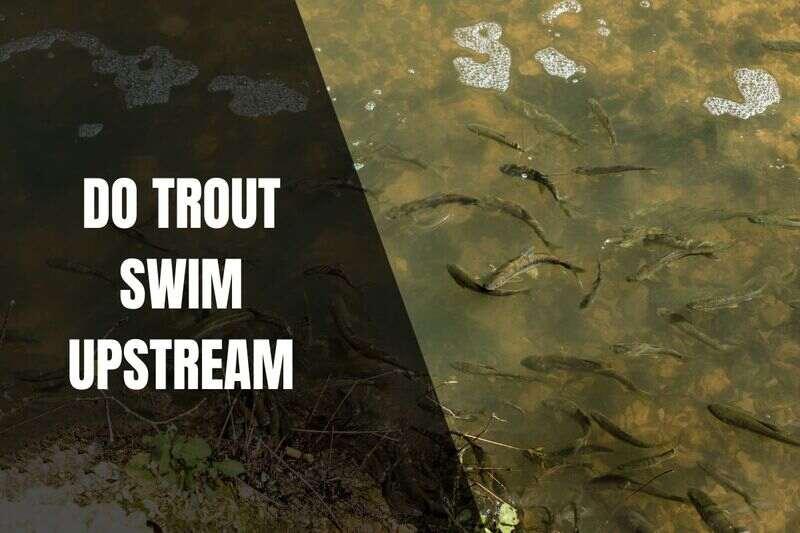Every year countless trout make their way upstream to the fresh cold headwaters from where they were born. Trout instinctively return to the same streams they were hatched from years earlier.
It’s here where the female trout will lay their eggs, and the males will compete with one another for the right to fertilize them.
Four to ten weeks later, the next generation will hatch and start the cycle all over again.

Do Trout Swim Upstream or Downstream?
Trout always swim facing upstream. After they are hatched, many trout will make their way downstream to deeper lakes and rivers where the water stays cooler during the summer.
On the other hand, other trout will swim out to see and grow up in the ocean before eventually returning to the cool headwaters from where they were born.
Why Do Trout Swim Upstream?
Trout need to swim facing upstream in order to breathe. Regardless of whether they are swimming to deeper lakes and rivers, or returning to the headwaters from where they were born, trout will always swim facing the current.
In order to breathe, the oxygen-rich waters must flow in through their mouths and out their gills. If they swim facing downstream, they will not be able to breathe properly. Because of this, anglers must always fish upstream if they want to catch a trout.
How Do Trout Swim Upstream?
The body of the trout is designed for swimming through the water. Their streamlined body is designed to be as efficient as possible when it comes to swimming upstream through rougher waters.
With minimal effort, the trout can use the energy of the water to propel them forward in a zigzagging fashion. Their fins function much like the sail on a ship, propelling them forward through the flowing current.
Do Trout Migrate Upstream?
Trout migrate in a cycle that begins in the cold headwaters of landlocked rivers throughout North America and ends in the same location where they were born. Shortly after hatching, trout will migrate downstream towards the deeper rivers and lakes, where the water is cooler during the summer heat.
After coming of age, instinctively, the trout will migrate back upstream to the same headwaters they were hatched from. Even trout who swim out to sea will eventually make their way back to the place they were born.
When Do Trout Swim Upstream?
Trout will spend most of their adult life in the cooler lakes, rivers, and open ocean before returning to the cool headwaters to spawn.
Depending on the species of trout, this process can take anywhere from 2 to 4 years. Once they come of age, they are instinctively driven back to where they were born to start the cycle again.
Do All Trout Migrate Out to Sea?
Most trout will only migrate to the deeper lakes and rivers, but some species of trout make their way all the way out to the open ocean. In order to flourish, trout need to live in cool waters.
While some species prefer to grow up in lakes or rivers, species like the rainbow, brown, and cutthroat trout make their way out to the open ocean. When rainbow and brown trout enter the Atlantic Ocean, they are commonly referred to as steelhead and sea trout, respectively. However, when cutthroat trout head out to the Pacific Ocean, they are still referred to as cutthroat trout.
Do Trout Swim Upstream to Spawn?
Trout always swim upstream in order to spawn. The shallower headwaters they were born in get too hot to survive during summer, forcing them downstream to deeper lakes, rivers, and even the ocean. Eventually, trout will return to where they were born to spawn the next generation.
When Do Trout Swim Upstream to Spawn?
Depending on the trout species, they may spend between two to four years in the rivers, lakes, streams, and open ocean, before making the journey back to the place of their birth. Once the trout come of age, they will begin their journey upstream to find the perfect place to spawn.
How Do Trout Spawn Upstream?
The female trout are generally referred to as hens and will spend days on end creating several different nests along the gravel bottom.
After finding these locations, they will lay their eggs in the nest, and the males will then fertilize them. These nests can be filled with anywhere from 100 to 1000 eggs, which will hatch four to ten weeks later.
